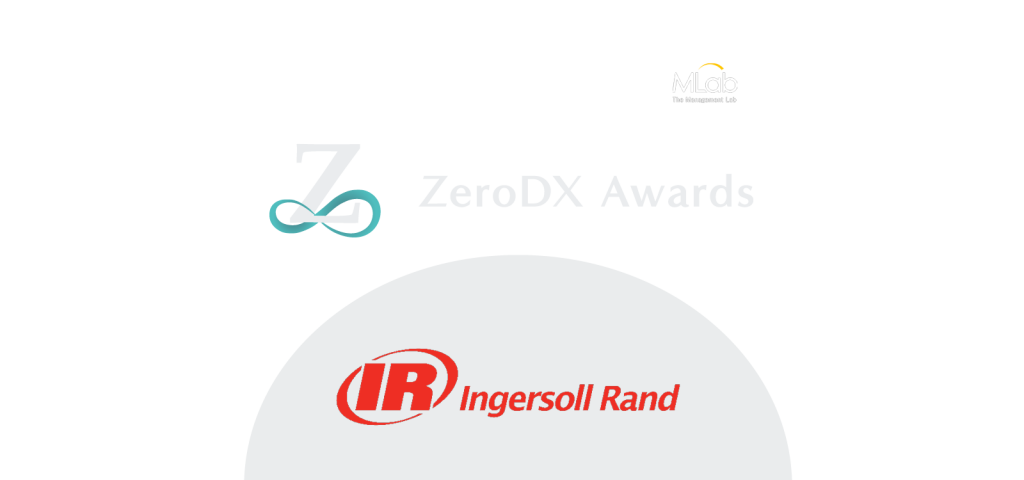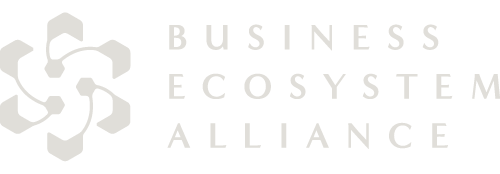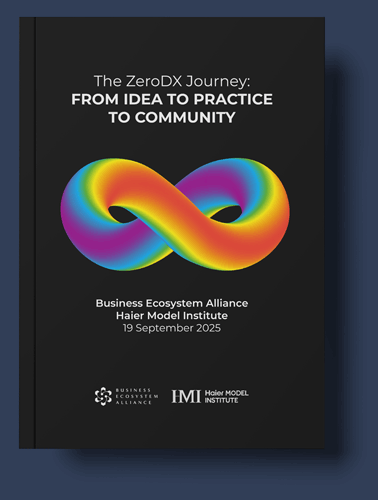
KKR: Turning Employees Into Owners
You probably wouldn’t expect a profit-obsessed private equity giant to be a champion for distributed ownership. The popular, and mostly accurate, image of private equity ownership is one of radical cost-cutting where lower level employees are unmourned collateral damage. If that’s your view of private equity, you haven’t met Pete Stavros, at KRR, one of the industry’s most savvy operators.
The story starts in 2013 when KKR acquired Milwaukee-based Gardner Denver, a maker of pumps, compressors and other industrial products. Tracing its origins to 1859, the company had grown stagnant. It was facing a series of operational challenges and slumping demand from its oil and gas clients. In 2017, Stavros, who had orchestrated the $3.9 billion deal, became Gardner Denver’s board chair. Three years later, in a bid for greater scale, Stavros organized a merger with the industrial products division of Ingersoll Rand. As part of the deal, the new entity, with $4 billion in annual revenue, took the Ingersoll Rand name.
From the outset, Stavros had viewed Gardner Denver as more than just another investment. Stavros had begun experimenting with a new ownership model after assuming leadership of KKR's Industrials industry group in 2011. For him, Gardner Denver represented the next frontier for testing his long-held belief that creating a culture of shared ownership was the surest way to build enduring value.
This conviction was born from personal experience. Growing up, Stavros has heard his father, a highway construction worker, inveigh against a system where the interests of management and hourly laborers were constantly in conflict. As Pete put it, “My dad was on an hourly contract for 45 years, and he was frustrated that there was no incentive to be more productive, to care about quality, cost, or do the right thing for customers. He thought it was an insane system.” Pete shared his dad’s assessment, and now, as chair of a global manufacturing firm, had the chance to build the sort of empowered, collaborative culture that would have heartened his dad.
Sharing the Wealth
In private equity deals, the management team is usually given a slug of stock options as an incentive to work hard and grow the business. Having witnessed the power of these incentives, Stavros believed that extending ownership to every employee would be similarly potent. Vicente Reynal, who was appointed CEO of Gardner Denver in 2016, shared that view. Growing up in a small Puerto Rican village, Reynal had been inspired by the ingenuity and resilience of local business owners and, like Stavros, believed ownership was the key to building a successful business.
The pair agreed that when Gardner Denver relaunched as a public company, three percent of the equity would go to non-managerial employees. Initially, Stavros and Reynal kept the plan under wraps. They were confident in their, but wanted the shares to have real value before making their move. That moment arrived on May 12, 2017, when Gardner Denver rejoined the New York Stock Exchange. Employees had gathered across thirty sites to watch Reynal and Stavros ring the opening bell, but no one expected what followed. In videos played at each location, Reynal announced that the firm’s 6,100 non-management employees would receive shares amounting to 40% of their salary—a $100 million stock grant. Aside from the requirement that employees keep at least half their shares for the first year, there was no fine print. The stock was theirs, effective immediately.
The jaw-dropper move provoked deep emotions. Stavros recalls employees in India announcing to their family that they were now owners of a US multinational. “They were shocked,” he says, “many were moved to tears.” Says Reynal, “People went from thinking, ‘This is the company I work for,’ to, ‘This is my company and my factory. These are my machines and my tools. I’m going to take care of them because I’m an owner.’” In one notable case, a quality manager in China moved his family nearer the plant so he could quickly address any troublesome issues.
When the Ingersoll Rand deal closed in March 2020, an additional 10,000 employees received share grants totaling $150 million. Since then, Ingersoll Rand has continued to issue equity to new associates, including those of the 40 companies that have been since 2020. Cumulatively, these are among the largest equity grants in corporate history.
Embedding the ethos of ownership
Issuing equity represented a major milestone, but it was only the first step in transforming employees into owners. “Our goal,” says Stavros, “was to encourage everyone to adopt an owner's mindset, and we were dedicated to giving them the tools and skills necessary to act in that capacity.”
Stavros is quick to credit the evolution at Ingersoll Rand to Reynal's leadership. "It all comes down to leadership. To really do this and make it part of the culture, you need someone at the top with deep empathy for front-line workers. Vicente intuitively understood that all the other things the company was trying to achieve would be easier if employees were empowered to feel and act like owners."
Flattening the pyramid. To that end, Reynal collapsed the company’s pyramidal structure from ten layers to four. Henceforth, no manager would have fewer than eight direct reports. What had been a high matrixed organization was decomposed into small operating units, each with its own P&L.
The result was a 30% reduction in managerial roles and a much-accelerated pace of decision-making. The moves also increased the ability of Gardner Denver to attract top talent. Post-merger, Ingersoll Rand received the same treatment.
Building business literacy. As he was cutting layers, Reynal and his team were also working to increase the business acumen of hourly employees. Initially, the focus was on managing net working capital—speeding up receivables, keeping inventories lean, and handling payables more effectively. With a working capital to revenue ratio that was one of the highest in the industry, improvement in this area was crucial for hitting performance targets.
In town hall meetings, Reynal explained the company's performance objectives in detail and challenged employees to reduce the ratio of net working capital to revenue by 30% within three years. The first step was to train every associate in the intricacies of the cash conversion cycle (Fig 1). The training, broken into digestible 30-minute sessions, translated new financial concepts into simple, everyday terms. Managing revenues and expenses was like overseeing the household budget, while inventory management akin to stocking the pantry.
The training outlined specific tactics for every role. Says Reynal, “We went function by function to show how every single person touched cash.” Frontline workers learned about the impact of supply chains, usage rates, and spares. Sales teams were equipped with strategies to improve on-time payment and engineers were encouraged to strip out seldom used product features.
With new tools in hand, employees were mobilized to hunt down improvement opportunities. Progress was tracked monthly, and major achievements were widely celebrated. After a member of the UK finance team successfully collected a five-year-old, million-dollar receivable, Reynal paid a personal visit and hosted an online celebration. Within twelve months, working capital had declined six percent as percentage of sales. The 30% target was achieved ahead of schedule, and further savings have been made since.
Having built a solid foundation of financial literacy, Reynal launched a second round of training—the Economic Growth Engine—that focused on what frontline teams could do to harness trends like sustainability and digitization. As with the cash training, there was an emphasis on what each employee could do to create value, and how even small improvements could compound into significant gains down the line.
Solving problems bottom-up. Front line teams were not only encouraged to address a wide array of operational issues, they were also given a central role in defining new strategic initiatives—a step that required an overhaul of the traditional planning process. Instead of specific targets cascading down, employees huddled up with colleagues and customers to brainstorm ways of growing revenue and margins. That might involve cracking new market segments, generating recurring revenues from internet-connected products, accelerating innovative product designs or improving employee engagement scores. Business units selected the most promising projects, and each initiative was led by a “board of directors”—a small, cross-functional team that was granted the authority and resources to push the idea forward.
Says Reynal,“We called the teams 'boards’ to communicate that they’re in charge of driving results.” Currently, there are 400 boards involving 7,000 Ingersoll Rand associates. (An employee will often serve on four or five boards concurrently.) One board, comprising members from sales, marketing, and operations, worked to increase the 'close ratio' for compressor leads generated online, while another was charged with reducing the company’s effective tax rate.
Boards operate with a lean-startup rhythm. Hundred-day sprints are divided into weekly goals, with teams convening for 45-minutes each week to review progress, tackle obstacles, and reconfirm targets. “The boards aren’t responding to a set of KPIs,” says Reynal, “they’re thinking and acting like entrepreneurs.” A group of IR engineers in Buffalo, New York, for example, developed a plan to manufacture a new product, centrifugal compressors, in a mothballed plant. The proposal, which forecast revenues of $20 million per year on a $3 million investment, was quickly funded. Seven months later, the plant was maxed out and had a $50 million order book.
It is not just boards that are empowered to solve problems; so too are the roughly 1,000 production teams spread across Ingersoll Rand’s 100 factories. Frontline operators are responsible for safety, quality, delivery, cost, productivity, and inventory. They identify and address problems, and decide when they need help from outside the team.
Thanks to distributed ownership, Ingersoll Rand is able to operate with a clock speed rarely seen in large companies. Employees don’t wait for orders from above, neither are they burdened with requests from meddlesome staff groups. Ingersoll Rand’s corporate center comprises only twenty people, working on a single floor of a modest building in Davidson, North Carolina—not bad for a company that has grown to close to 20,000 employees.
Transparent communication. A culture of shared ownership depends on transparency. At Ingersoll Rand, employees get regular updates via quarterly “all-owner” meetings—held locally and company-wide. Most of the time in these sessions is reserved for employee questions. “There are no softballs,” says Reynal. He recalls that in a recent update meeting in India, there was a long conversation on how to apportion earnings between investment and dividends.
Transparency is also central to Ingersoll Rand’s improvement efforts. Every board shares its goals, and results on the company intranet. The agenda and timing of team meetings is also posted, and any employee is welcome to join. Monthly online events showcase local innovations and breakthrough practices—whether it’s a speedy way of converting a traditional metering pump into a connected device, or a methodology for identifying superfluous product features. Openness accelerates the diffusion of new practices and creates healthy competition as units vie to capture the innovation spotlight.
Impact. Since the IPO, Ingersoll Rand has been on a tear. Revenue growth has averaged nearly 17% per year, and earnings have increased by 20% per annum—atypical results for a “rust belt” company. Stavros and Reynal reckon that shared ownership has unlocked nearly $3 billion in incremental value—$400 million through better cash management and lower attrition, and $2.5 billion from revenue and margin expansion attributable to employee ingenuity.As of this writing, Ingersoll Rand’s share price has more than quadrupled from its post-merger low in March 2020, out-performing the Dow Jones Industrial Average by a 4:1 margin.
The human impact of shared ownership has been equally remarkable. Ingersoll Rand has vaulted from the 19th to the 90th percentile in Gallup’s engagement rankings. Big gains have also been made in workplace safety, with Ingersoll Rand now boasting an incident rate that’s far below the industry average.
Finally, there’s Stavros’ dream of spreading the wealth. Not only was the investment a tremendous success for KKR's investors, it’s created meaningful wealth for all of Ingersoll Rand’s non-managerial employees whose shares are now worth more than 3X the original grants.
A logistics team leader spoke for many when he said, "The company has given me the control to create more wealth for them and for me. It makes me feel great. It makes me hungry.”
Many at Ingersoll Rand view their company as a 175-year-old newbie, melding the speed and flexibility of a start-up with the resources of a large corporation. The idea of “entrepreneurship at scale” may seem like an oxymoron, but Ingersoll Rand has proven it’s an attainable goal—when you stop treating employees as “resources” and start treating them as owners. Says Reynal, “There’s nothing more energizing than the sense that you’re building your own wealth when you make smart decisions. And when you couple that with the competence and authority to change the business for the better, the potential is almost limitless.”
Going Big
For Stavros, the case of Ingersoll Rand was an important catalyst for spreading the model for shared ownership more broadly. In 2022, the year after KKR sold its final stake in Ingersoll Rand, the firm committed to deploying the broad-based ownership model across all the companies it purchases with its Americas private equity platform. To date, KKR portfolio companies in the US, Europe and Asia Pacific have awarded billions of dollars in equity to over 60,000 non-management employees across more than 40 portfolio companies. Also in 2022, Stavros and his wife also launched a nonprofit, Ownership Works, with a mission to increase prosperity through shared ownership at work by helping companies to develop and implement broad-based employee ownership programs. The nonprofit has grown to over 90 founding member organizations and set an initial goal of creating hundreds of thousands of new employee-owners and generate at least $20 billion of wealth for working families by 2030.


